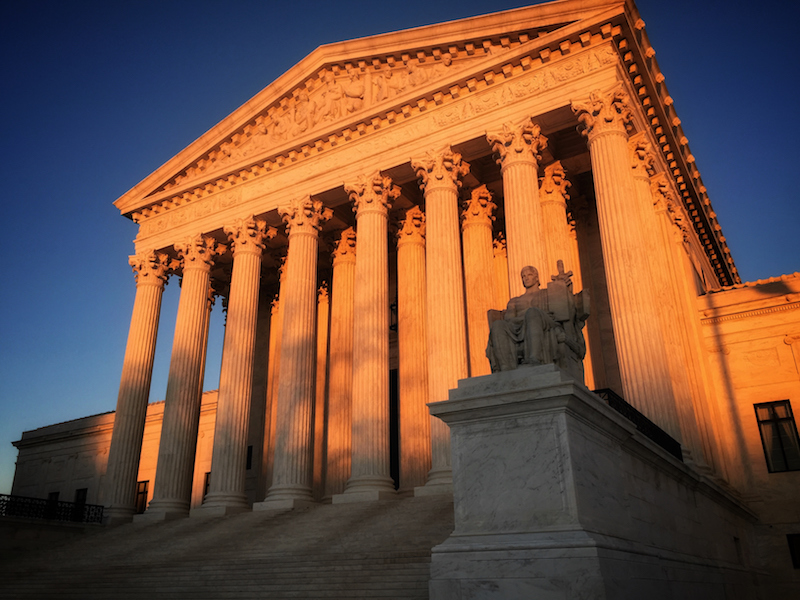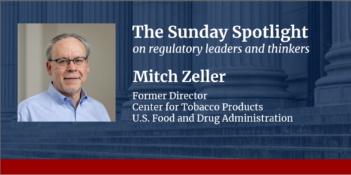
Judge Kavanaugh’s views on Chevron may create more uncertainty than exists under the current doctrine.
Amid debate over pivotal issues such as abortion rights and presidential power, senators deliberating this week over Judge Brett Kavanaugh’s nomination want to know more about his views on a seemingly obscure 1984 U.S. Supreme Court decision in Chevron v. Natural Resources Defense Council.
Judge Kavanaugh has criticized Chevron in recent years. Writing in the Harvard Law Review, for example, he has taken issue with the view that Chevron requires courts to defer to administrative agencies’ understandings of what ambiguous statutory provisions mean. But, as even Judge Kavanaugh has acknowledged, his critique of Chevron is far from fully developed. One might even say that it is itself ambiguous. The Senate hearings thus provide an opportunity for Judge Kavanaugh to provide greater clarity about his views on Chevron.
In Chevron, the Supreme Court announced that when courts review actions by government agencies such as the U.S. Environmental Protection Agency (EPA) or the Department of the Treasury, they must allow these agencies to determine the meaning of ambiguous terms in their governing statutes, as long as the agencies’ choices are reasonable. Although most members of the public have not heard of Chevron, it is one of the most cited Supreme Court decisions of all time, and commentators believe it is pivotal to the effective administration of government. But Chevron has also lately come under increasing assault, with Judge Kavanaugh and at least two members of the current Supreme Court raising questions about its legality.
The Chevron case involved a challenge to a Clean Air Act regulation adopted by EPA. The statutory term at issue—a “source” of air pollution—was undefined in the statute. Did “source” mean an individual pipe or smokestack? Or could it mean an entire factory itself, thus allowing regulated entities more flexibility to implement cost-effective pollution control? The Court looked throughout the statute and its legislative history but came up empty-handed. Both the individual-level and factory-level definitions seemed consistent with the statute’s purpose. Neither was better (or worse) in terms of EPA’s ability to address air quality. Having first found the word “source” to be ambiguous, and then finding the EPA’s factory-level definition to be reasonable, the Chevron Court deferred to EPA.
As a legal matter, Chevron deference has been long justified as necessary to respect a statute’s express or implied delegation of authority to agencies to define and construe the statutes they administer. Congress, after all, gives agencies the authority to implement these statutes, and implementation at times necessitates giving more precise meaning to ambiguous terms. As a matter of institutional policy, agencies are also more centralized, expert, and democratically accountable than courts.
But Chevron’s critics argue that its required deference short-circuits the role of the judge. Judge Kavanaugh writes that Chevron “has no basis in the Administrative Procedure Act” (APA) and, “if anything, Chevron seems to flout the language of the Act.” He points out that the APA “makes clear that ‘the reviewing court’—not the agency—‘shall decide all relevant questions of law, interpret constitutional and statutory provisions, and determine the meaning or applicability of the terms of an agency action.’”
But how does Chevron flout the APA if the “relevant” legal questions are, first, whether the statute is ambiguous, and, second, whether the agency’s interpretation is reasonable? Answering those questions necessarily calls for courts to “interpret…statutory provisions.”
Moreover, as the Court indicated in Chevron and has made still clearer in subsequent decisions, the doctrine’s two-step framework actually has built into it a series of intermediate steps between any initial finding of statutory ambiguity and judicial deference to an agency’s reasonable interpretation. These interstitial steps demand further judicial decision-making about the most relevant legal question of all: namely, whether the statute should be understood to have delegated to the agency the power to give meaning to its ambiguous terms.
Despite his overarching criticism of Chevron, Judge Kavanaugh does acknowledge that actually “Chevron makes a lot of sense in certain circumstances”:
It affords agencies discretion over how to exercise authority delegated to them by Congress. For example, Congress might assign an agency to issue rules to prevent companies from dumping “unreasonable” levels of certain pollutants. In such a case, what rises to the level of “unreasonable” is a policy decision. So courts should be leery of second-guessing that decision. The theory is that Congress delegates the decision to an executive branch agency that makes the policy decision, and that the courts should stay out of it for the most part. That all makes a great deal of sense.
Perhaps senators and the rest of us will be forgiven for thinking that what makes great sense to Judge Kavanaugh sounds an awful lot like the Chevron doctrine.
Judge Kavanaugh tries to distinguish between “cases involving statutes using broad and open-ended terms like ‘reasonable,’ ‘appropriate,’ ‘feasible,’ or ‘practicable,’” where he thinks judicial deference makes sense, and those which involve a “a specific statutory term or phrase,” where it does not. He laments that courts have applied deference in the latter cases—and, revealingly, he cites only Chevron itself as the source of his lamentation, apparently indicating that he does think Chevron was wrongly decided. Yet it is hard to see how the undefined term “source” that was at the heart of Chevron is all that specific, especially when pollution reaches the atmosphere via millions of different routes.
More importantly, it is hard to see how a fuzzy line between “broad” and “specific” does much to eliminate the fuzziness that Judge Kavanaugh sees as one of Chevron’s major problems. That problem, for Judge Kavanaugh, arises out of Chevron’s distinction between “clear” and “ambiguous” statutes. He notes that it is far from clear “how much clarity is needed to call a statute clear,” and it is uncertain how the level of clarity in a statute would ever be measured in a consistent, principled way. For Judge Kavanaugh, “one judge’s clarity is another judge’s ambiguity.”
All fair points. But it is also far from self-evident how much specificity is needed to call a statutory term “specific,” or that there is any neutral, principled way to distinguish a “broad and open-ended term” that calls for judicial deference from the “specific statutory term or phrase” that does not. Might not one judge’s specific statutory term just be another judge’s broad term?
If Chevron were to be overturned, judicial decisions might not actually prove to be any more principled and predictable. After all, as Judge Kavanaugh admits, judges disagree over more than just ambiguity. Statutory interpretation is not like solving a simple mathematical equation. Judges will most certainly disagree with each other even under Judge Kavanaugh’s preferred approach of having judges always seek the “best reading” of a statute. One judge’s smokestack-only “source” is another judge’s entire-factory “source.”
Critics of Chevron have not put forth evidence that unprincipled judicial decision-making will be lessened if Chevron were to be abandoned. On the contrary, in a recent study, Kent Barnett, Christina Boyd, and Christopher Walker actually raise the possibility that abandoning Chevron might increase the influence of political ideology in circuit court decisions.
It may be instructive to consider what we know of circuit court decisions before and after Chevron. Joseph Smith and Emerson Tiller analyzed circuit court reviews of EPA actions from 1981 to 1993, finding that “overall, the courts…were no more likely to defer to the EPA after Chevron than before it.” An earlier, more time-limited study by Don Elliott and Peter Schuck compared six-month windows before and after Chevron, reporting an increase in agency affirmances by circuit courts after Chevron—but a marked decrease in such affirmances in the nation’s predominant administrative law appellate court, the U.S. Court of Appeals for the D.C. Circuit.
It is far from clear that the kind of changes Judge Kavanaugh proposes would solve the problems he perceives to exist. The legal ramifications of shifting to his approach to statutory review are also unclear. Abandoning Chevron altogether would produce considerable uncertainty. Cass Sunstein has suggested that overturning Chevron would result in some “chaos,” even “upheaval,” as lower courts adapt to a post-Chevron order. Moreover, the legal status of thousands of earlier rulings in which judges followed Chevron might be thrown into doubt.
In the end, it is hard not to wonder whether, if a proposal to change the Chevron doctrine contains core ambiguities in its justification and in the consequences it might produce, perhaps it is best simply to defer to the reasonable status quo.
This essay is part of a series entitled Judge Kavanaugh and Administrative Law.




